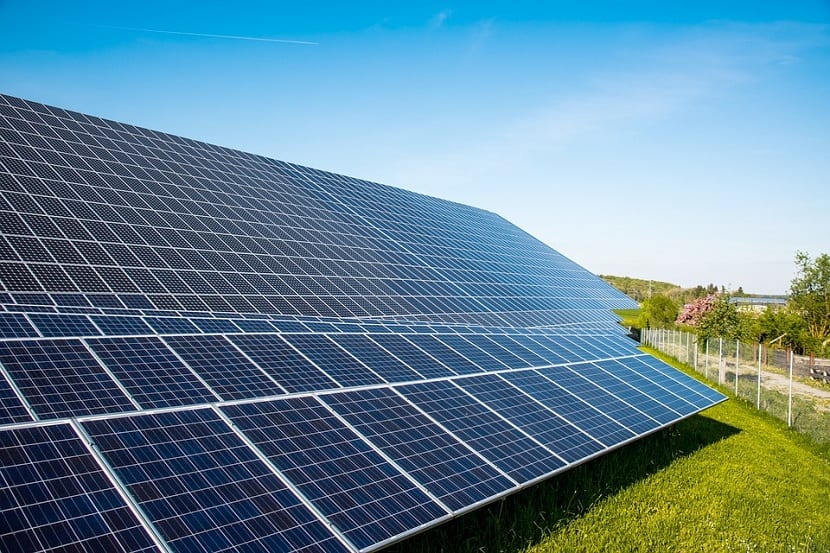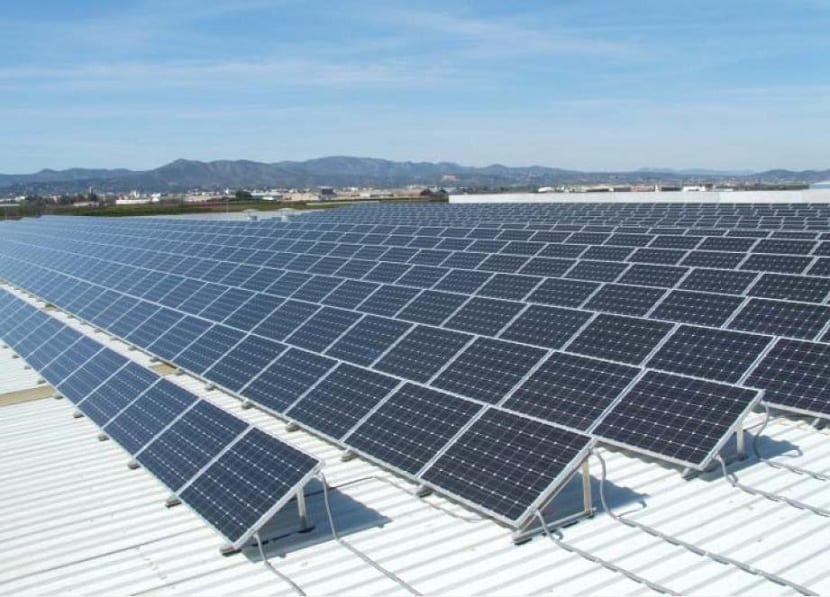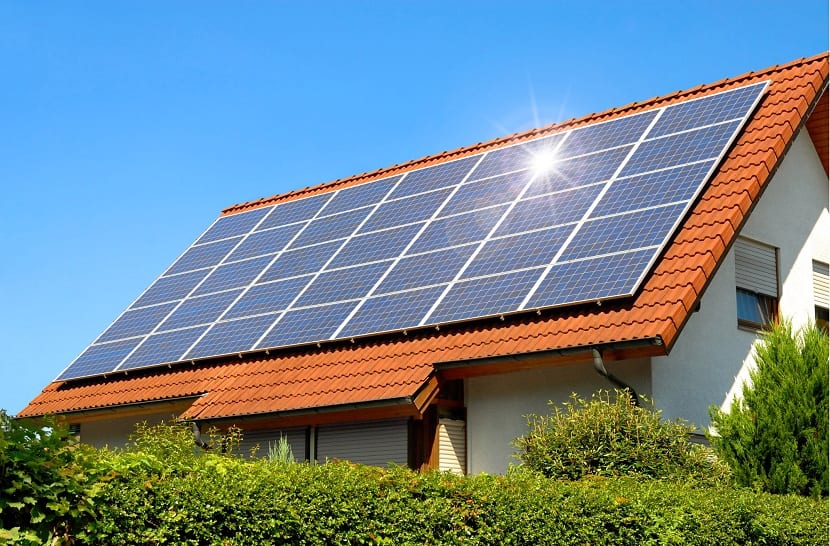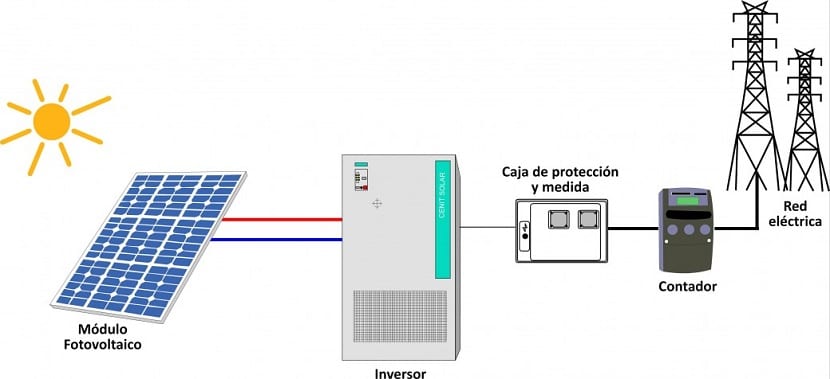
Although fossil fuels still dominate our planet today, renewables are finding their way into the markets of all countries in the world. Renewable energies are those that do not pollute the environment, that do not run out and that are capable of harnessing the energy of elements on the earth and surroundings, such as the sun, wind, water, etc. To generate electricity. Since fossil fuels are about to run out, renewables are the future.
Today we are going to talk in depth about photovoltaic solar energy. This energy is, perhaps, the most used energy in the world in the field of renewables. Do you want to know how it works and the different uses it has?
Definition

Before beginning to describe its uses and properties, let's clarify what photovoltaic solar energy is for those who do not yet know well. Solar energy is that which is able to harness solar energy from light particles to produce energy which is later transformed into electricity. This energy source is totally clean, so it does not pollute the environment or emit harmful gases into the atmosphere. In addition, it has the great advantage of being renewable, that is, the sun is not going to be exhausted (or at least for a few billion years).
Solar panels are used to collect energy from the sun that are capable of capturing photons of light from solar radiation and transforming them into energy.
How is photovoltaic solar energy generated?
As mentioned before, to generate photovoltaic energy, it is necessary to capture the photons of light that solar radiation has and convert it into electricity in order to use it. This can be achieved by the photovoltaic conversion process through the use of a solar panel.
The solar panel has as a crucial element photovoltaic cell. This is a semiconductor material (made of silicon, for example) that requires no moving parts, no fuel, or generates noise. When this photovoltaic cell is continuously exposed to light, it absorbs the energy contained in the photons of light and helps to generate energy, setting in motion the electrons that are trapped by an internal electric field. When this happens, the electrons collected on the surface of the photovoltaic cell generate a continuous electrical current.
Since the output voltage of photovoltaic cells is very low (only 0,6V), they are placed in electrical series and then encapsulated in a glass plate on the front and another material that is resistant to humidity on the front. rear (since the vast majority of the time it will be located in the shadow).
The union of the series of photovoltaic cells and coated with the mentioned materials form a photovoltaic module. At this level you can already buy the product to change into a solar panel. According to the technologies and the type of use that is made of it, this module has a surface area of 0.1 m² (10 W) to 1 m² (100 W), average indicative values, and declines voltages of 12 V, 24 V or 48 V depending on the application.
As mentioned above, through the photovoltaic conversion process, energy is obtained in very low voltages and in direct current. This energy cannot be used for the home, so it is necessary that, later, a power inverter to transform it into alternating current.
Elements and performance

The devices where the photovoltaic cells are located are called solar panels. These panels have multiple uses. They are used to generate energy both in the personal, family and business areas. Its price in the market is around 7.000 euros. The main advantage of these solar panels is that their installation is very easy and requires little maintenance. They have a lifespan of about 25-30 years, so the investment is perfectly recovered.
These solar panels must be installed in a correct place. That is, in those areas that are oriented to the greatest number of hours of sunshine per day. In this way we can make the most of the sun's energy and generate more electricity.
The solar panel needs a battery that stores the energy generated to use it in those hours when there is no sunlight (such as at night or on cloudy or rainy days).
Regarding the performance of a photovoltaic solar installation, it can be said that it depends entirely on the orientation of the solar panels, the placement and the geographical area where it is installed. The more hours of sunshine in the area, the more energy can be generated. Most solar installations recover their investment in about 8 years. If the useful life of the solar panels is 25 years, it pays for itself and you get more than enough profit.
Uses of photovoltaic solar energy
Photovoltaic systems connected to the grid

One of the main uses of photovoltaic solar energy is the installation of a photovoltaic sensor and a current inverter capable of transforming the continuous energy generated in the solar panels into alternating current to introduce it into the electrical grid.
The cost per kWh of solar energy it is more expensive than other generation systems. Although this has changed a lot over time. In some places where the number of hours of sunshine is higher, the cost of photovoltaic solar energy is the lowest. It is essential that you have financial and legal aid lines to offset production costs. At the end of the day, we are helping our planet not to be polluted and to avoid climate change and pollution.
Other uses of photovoltaic solar energy

- Illumination. Another use of photovoltaic solar energy is lighting at many village entrances, rest areas, and intersections. This lowers lighting costs.
- Signaling. This type of energy is used with increasing frequency for signaling on traffic lanes.
- Telecommunications. This energy is used in many occasions for the fields of mobile power repeaters, radio and television.
- Rural electrification. With the help of a centralized system, the most dispersed towns and small villages can enjoy renewable electricity.
- Farms and livestock. For energy consumption in these areas, photovoltaic solar energy is used. To illuminate them, drive water and irrigation pumps, for milking, etc.
As you can see, photovoltaic solar energy is used in many areas that make it increasingly competitive in the markets and is considered the future of energy.
